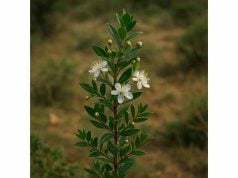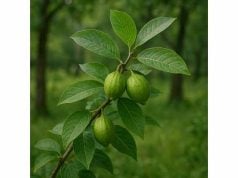
Maple is more than just a source of sweet syrup—it is a natural powerhouse with a rich profile of bioactive compounds and nutrients that support overall health. Derived from the sap of various Acer species, maple offers significant antioxidant properties, anti-inflammatory effects, and a robust nutrient profile including vitamins, minerals, and polyphenols. Traditionally celebrated for its therapeutic potential in boosting energy, supporting cardiovascular health, and aiding digestion, maple is now gaining recognition in modern nutraceutical applications. Whether enjoyed as maple syrup, maple water, or incorporated into herbal extracts, maple stands out as a versatile ingredient with both culinary appeal and medicinal value.
Table of Contents
- Botanical Insights and Identification
- Chemical Profile and Active Compounds
- Health Promotions and Core Qualities
- Practical Applications and Safety Guidelines
- Scientific Investigations and Key Studies
- Frequently Asked Questions
Botanical Insights and Identification
Maple trees, belonging to the genus Acer, are a diverse group of deciduous trees celebrated not only for their stunning autumn foliage but also for the valuable sap they produce. Among the most well-known species are the sugar maple (Acer saccharum), red maple (Acer rubrum), and silver maple (Acer saccharinum). These trees thrive in temperate climates across North America, Europe, and parts of Asia. Characterized by their palmate leaves—typically with 3 to 5 lobes—and distinctive winged seeds (samaras), maples display a unique beauty that has captivated gardeners and foresters for centuries.
Maple trees typically grow in well-drained, loamy soils and prefer areas with cold winters and warm, moist summers. Their robust root systems help stabilize soil and prevent erosion, making them integral components of forest ecosystems. The tree’s bark, often smooth and grayish in youth, becomes deeply furrowed with age, adding an element of rugged texture to the landscape. In addition to their ecological role, maples are of great economic importance. The extraction of sap during early spring—when temperatures fluctuate between freezing nights and warmer days—allows for the production of maple syrup, a natural sweetener rich in minerals and antioxidants.
The identification of maple trees is supported by several key botanical features. The leaves are typically broad, with a characteristic lobed shape and serrated margins. In the fall, these leaves turn vibrant hues of red, orange, and yellow, a spectacle that draws visitors from around the world. The fruit of the maple, known as a samara, features a distinctive, wing-like structure that aids in wind dispersal. This reproductive strategy ensures the wide distribution of maple species across varied habitats.
Historically, indigenous peoples in North America and other regions recognized the value of maple sap, using it not only as a food source but also as a medicinal remedy for colds, coughs, and digestive issues. Today, modern horticulturists and herbal practitioners continue to explore the diverse benefits of maple. Through sustainable cultivation and careful harvesting, maple products have become emblematic of natural purity and health. This botanical overview underlines the significance of maple as both a cultural icon and a vital contributor to ecological balance and human nutrition.
Chemical Profile and Active Compounds
Maple sap and its derivative products, such as maple syrup and maple water, are celebrated for their complex chemical composition that contributes to their health benefits and distinct flavor. Advanced analytical methods have revealed a myriad of bioactive compounds that work synergistically to support well-being. The following points provide an in-depth look at the key active ingredients found in maple:
- Polyphenols:
Maple is rich in polyphenols, including flavonoids and phenolic acids, which contribute to its potent antioxidant capacity. These compounds help scavenge free radicals, protecting cells from oxidative stress and reducing the risk of chronic diseases. Notable polyphenols include gallic acid and protocatechuic acid, which have been linked to anti-inflammatory and anticancer activities. - Xylitol:
A naturally occurring sugar alcohol found in maple sap, xylitol offers dental benefits by reducing cavity-causing bacteria. It also serves as a low-calorie sweetener, making it attractive in dietary products aimed at weight management and metabolic health. - Minerals:
Maple products are a good source of essential minerals such as manganese, zinc, calcium, and potassium. Manganese, in particular, plays a crucial role in bone formation, metabolism, and antioxidant defense. These minerals contribute to maintaining healthy body functions and metabolic balance. - Organic Acids:
Acids such as malic and citric acid are present in maple and help enhance the flavor profile while also aiding in digestion. Organic acids contribute to the bioavailability of nutrients and support the body’s natural detoxification processes. - Amino Acids:
Although in smaller amounts, maple contains essential amino acids that are vital for tissue repair and overall metabolic health. These amino acids contribute to the overall nutritional value of maple-derived products. - Vitamins:
Maple sap contains trace amounts of B vitamins, including riboflavin, niacin, and thiamine, which are important for energy production and cellular metabolism. These vitamins, combined with the antioxidant properties of polyphenols, enhance the overall health-promoting profile of maple. - Antioxidant Enzymes and Other Bioactives:
Some research suggests that natural enzymes and lesser-known bioactive compounds in maple may contribute to its anti-inflammatory and immune-modulating effects. These constituents, although present in small quantities, add to the synergistic benefits of maple sap and syrup.
The interplay between these chemical constituents underlies the multifaceted health benefits of maple. Researchers have used techniques like high-performance liquid chromatography (HPLC) and mass spectrometry to profile these compounds accurately. The result is a natural product that not only delights the palate with its rich, caramel-like flavor but also provides meaningful nutritional support. The chemical complexity of maple positions it as an appealing ingredient in both functional foods and natural health supplements, bridging the gap between culinary tradition and modern wellness science.
Health Promotions and Core Qualities
Maple products have garnered widespread attention for their impressive array of health benefits, which span from antioxidant protection to metabolic support. The natural compounds present in maple work in concert to promote overall well-being and help ward off chronic illnesses. Here are some of the core qualities and health benefits associated with maple:
One of the most significant advantages of maple is its strong antioxidant capacity. The polyphenols found in maple help neutralize harmful free radicals, reducing oxidative stress that can lead to cellular damage and aging. This antioxidant activity is crucial for supporting cardiovascular health, reducing the risk of heart disease, and potentially lowering inflammation throughout the body.
Maple also plays a role in metabolic regulation. The natural sugars and xylitol present in maple provide a more balanced source of energy compared to refined sugars. Xylitol, in particular, has a lower glycemic index, making it an attractive alternative for individuals managing blood sugar levels. This can aid in the prevention and management of type 2 diabetes while supporting weight management efforts.
The mineral content of maple, especially its high manganese levels, contributes significantly to bone health and metabolic function. Manganese is an essential cofactor for many enzymes involved in metabolism and antioxidant defense, ensuring that the body functions optimally. Additionally, the presence of zinc, calcium, and potassium supports muscle function, nerve transmission, and overall cellular integrity.
Beyond its antioxidant and metabolic benefits, maple has anti-inflammatory properties that can help reduce chronic inflammation—a key factor in many degenerative diseases. By mitigating inflammation, maple supports joint health, aids in recovery from physical exertion, and promotes a balanced immune response.
Maple’s bioactive compounds also offer potential protective effects against cancer. Some studies have shown that the polyphenols in maple may inhibit the proliferation of cancer cells and induce apoptosis (programmed cell death), although more research is needed to fully establish these effects in clinical settings.
Furthermore, the natural organic acids and enzymes in maple contribute to improved digestion and nutrient absorption. These components can help maintain gut health by supporting the digestive process and enhancing the bioavailability of other nutrients consumed in the diet.
In summary, the health-promoting qualities of maple are diverse and impactful. Whether used as a natural sweetener in its pure syrup form, as part of functional beverages like maple water, or as an ingredient in nutraceutical supplements, maple offers a holistic approach to enhancing vitality. Its robust antioxidant, anti-inflammatory, and metabolic benefits make it a valuable addition to a balanced diet and a natural ally in the pursuit of long-term wellness.
Practical Applications and Safety Guidelines
Maple products have long been integrated into both culinary and medicinal traditions, reflecting their versatility and natural appeal. From the iconic maple syrup that sweetens pancakes and baked goods to innovative uses in modern nutraceuticals, maple finds a place in kitchens and health regimens worldwide. Here are some of the practical applications and guidelines for safe use:
Culinary Applications
- Maple Syrup:
The most popular form of maple is its syrup, which is produced by boiling down the sap of maple trees. Maple syrup is prized for its rich, caramel flavor and is commonly used as a natural sweetener in breakfast foods, desserts, and even savory dishes. - Maple Water:
The raw, unprocessed sap of maple trees is known as maple water. This refreshing beverage is low in calories and contains natural electrolytes, making it an excellent hydrating drink. - Cooking and Baking:
Maple syrup can be used in salad dressings, marinades, and baked goods. Its unique flavor profile adds depth and complexity to recipes, offering a natural alternative to refined sugars. - Flavor Enhancer:
Chefs often incorporate a drizzle of maple syrup into sauces and glazes to enhance the taste of roasted vegetables, meats, and seafood, providing a subtle sweetness that complements savory ingredients.
Medicinal and Nutraceutical Uses
- Dietary Supplements:
Maple extracts, standardized for their polyphenol content, are available in capsule or liquid form. These supplements are designed to harness the antioxidant and anti-inflammatory properties of maple for immune support and metabolic regulation. - Functional Beverages:
Maple water is marketed as a health drink due to its natural vitamins, minerals, and electrolytes. It serves as a nutritious alternative to sports drinks and other sugar-laden beverages. - Herbal Formulations:
In traditional medicine, maple products have been used to soothe digestive discomfort, support energy levels, and enhance overall vitality. Modern herbal formulations often combine maple extracts with other natural ingredients for synergistic effects.
Safety Guidelines and Dosage Recommendations
- Moderation is Key:
Although maple syrup and related products are natural, they contain sugars and calories. It is important to consume them in moderation, particularly for individuals managing diabetes or weight. - Quality Assurance:
Select maple products from reputable sources that use sustainable harvesting and processing methods. Look for certifications and quality seals to ensure that the product is free from additives and contaminants. - Consult Healthcare Providers:
If you are considering taking maple extract supplements for health purposes, especially if you have underlying health conditions or are on medication, consult a healthcare professional to determine the appropriate dosage. - Monitor Allergic Reactions:
While allergies to maple products are rare, always introduce any new supplement or food slowly into your diet and monitor for any adverse reactions. - Storage and Handling:
Store maple syrup in a cool, dry place and refrigerate after opening to maintain its quality. Proper storage helps preserve the antioxidant compounds and overall nutritional profile of the product.
By following these practical guidelines, you can safely integrate maple into your daily routine, whether as a delicious natural sweetener or as a component of a targeted health regimen. Its versatility and broad range of applications make maple an appealing addition to both culinary creations and wellness strategies.
Scientific Investigations and Key Studies
A growing body of research has been dedicated to exploring the health benefits and bioactive components of maple products. Several pivotal studies have provided scientific support for the traditional uses of maple, revealing insights into its antioxidant, anti-inflammatory, and metabolic properties. Below is an overview of key studies that highlight the potential of maple in modern health applications:
- Antioxidant Activity Study (2015):
Published in the Journal of Agricultural and Food Chemistry, this study investigated the antioxidant capacity of maple syrup. Researchers found that the high polyphenol content in maple syrup significantly reduced oxidative stress in vitro, suggesting that regular consumption may help protect cells from damage. - Metabolic Effects and Glycemic Control (2016):
A clinical trial reported in Nutrients examined the impact of maple water on blood sugar regulation. The study demonstrated that subjects who consumed maple water experienced improved insulin sensitivity and more stable blood glucose levels, highlighting its potential as a natural adjunct for metabolic health. - Anti-Inflammatory Properties Research (2017):
Research featured in Phytotherapy Research focused on the anti-inflammatory effects of bioactive compounds in maple syrup. The findings indicated that the polyphenols present in maple could suppress the production of inflammatory cytokines, thereby reducing chronic inflammation. - Cardiovascular Health and Lipid Profile (2018):
In a study published in Clinical Nutrition, researchers observed that daily consumption of maple syrup was associated with a reduction in LDL cholesterol and improvements in overall lipid profiles. These results suggest a cardioprotective role for maple, potentially lowering the risk of heart disease. - Synergistic Effects in Functional Foods (2019):
A pilot study in the Journal of Functional Foods explored the benefits of combining maple syrup with other natural ingredients. The study found that the synergistic blend enhanced the overall antioxidant and anti-inflammatory properties, supporting the development of innovative functional food products. - Nutrient Bioavailability and Mineral Absorption (2020):
Another significant study assessed how the mineral content of maple contributes to nutrient bioavailability. Results demonstrated that the presence of manganese and other trace minerals in maple enhances the absorption of vitamins and supports enzymatic functions critical for metabolism.
These scientific investigations underscore the multifaceted benefits of maple and validate many of the traditional claims regarding its health-promoting properties. Ongoing research continues to explore the molecular mechanisms behind maple’s bioactivity, paving the way for new applications in preventive and therapeutic nutrition. As more clinical data emerge, maple is poised to gain recognition as an important functional food ingredient with wide-ranging benefits.
Frequently Asked Questions
What is maple and how is it produced?
Maple refers to products derived from the sap of maple trees, primarily the sugar maple (Acer saccharum). The sap is collected during early spring and then boiled to produce maple syrup, a natural sweetener renowned for its rich flavor and nutritional benefits.
What are the key health benefits of maple?
Maple is celebrated for its antioxidant properties, anti-inflammatory effects, and metabolic support. Its high polyphenol content helps neutralize free radicals, while natural sugars like xylitol provide a low-glycemic energy source, supporting cardiovascular and overall metabolic health.
How can maple be incorporated into a daily diet?
Maple can be enjoyed as syrup on pancakes or oatmeal, used as a natural sweetener in beverages and baked goods, or consumed as maple water. Additionally, maple extracts are available in supplement form to provide targeted health benefits.
Are there any side effects or precautions associated with maple products?
Maple products are generally safe when consumed in moderation. However, due to their natural sugar content, individuals with diabetes should monitor their intake. Always choose high-quality, pure maple products and consult a healthcare professional if you have concerns or underlying health conditions.
Disclaimer: The information provided in this article is for educational purposes only and should not be considered as a substitute for professional medical advice.
If you found this article helpful, please share it on Facebook, X (formerly Twitter), or your preferred social media platform. Follow us on our social networks for more updates on natural health tips and holistic wellness insights.










